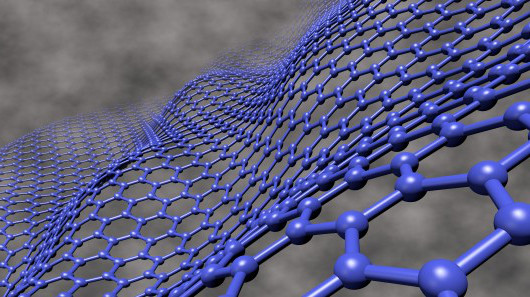The plan is to have 30-minute presentations followed by 15 minutes of discussion to have ample time to raise questions. The panels have 15+5 minutes per participant. All participants are encourage to present posters at the reception in the Hariri Institute, which will be introduced in a short “show and tell” session Thursday afternoon.
Thursday May 8
8:00—8:30 Coffee
8:30—10:00 Broad Overview:
- Andreas Kronfeld (FNAL): Massive Excitement in QCD and Beyond
- Eduardo Fradkin (Illinois): Effective Field Theories of Topological Insulators
10:00—10:30 Coffee
10:30—12:00
- Roger Melko (Waterloo/Perimeter): Quantum Monte Carlo and Quantum Entanglement
- Liang Fu (MIT): Dirac Fermion and Topological Matter
12:00—13:30 Lunch
13:30—15:00
- Fakher Assaad (Wurtzburg): Quantum Monte Carlo in Correlated Fermionic Models
- Simon Hands (Swansea): Graphene as a lattice gauge theory
15:00—15:30 Coffee
15:30—17:45
- Anders Sandvik (Boston): Quantum Monte Carlo Simulations of Deconfined Quantum Criticality
- Meifeng Lin (BNL): Computational Issues in BSM Theories — Past, Present and Future
- Joel Giedt (RPI): Lattice N=4 SYM
17:45—18:15 Poster preview “show and tell”
18:30 Reception with poster session (list of poster titles below)
Friday May 9
8:30—10:00
- Steve White (UCI): The density matrix renormalization group and tensor network methods
- Tony Kennedy (Edinburgh): HMC and All That
10:00—10:30 Coffee
10:30—12:00
- Juan Maldacena (IAS): Quantum mechanics and the geometry of spacetime
- John McGreevy (UCSD): Lattice models for anomalous field theories
12:00—13:30 Lunch
13:30—15:00
- Subir Sachdev (Harvard): Quantum phase transitions of metals
- Ribhu Kaul (Kentucky): Quantum Monte Carlo of Spin Models
15:00—15:30 Coffee
15:30—17:00
- Norman Christ (Columbia): Chiral fermions and precision lattice field theory
- Uwe Wiese (Bern): Classical and Quantum Simulation of Gauge Theories in Particle and Condensed Matter Physics
17:00—18:20 Panel on Quantum Monte Carlo and the Fermion Sign Problem: (15+5 minutes each)
David Ceperley (Illinois), Shailesh Chandrasekharan (Duke), Sandro Sorella (SISSA), Emanuel Gull (Michigan)
Saturday May 10
8:30—10:00
- Nandini Trivedi (Ohio State): Atoms in Optical Lattices
- Simon Catterall (Syracuse): Higgsing lattice gauge theories with strongly interacting fermions
10:00—10:30 Coffee
10:30—11:00
- Rich Brower (Boston): Remarks on CFTs, Radial Lattice Quantization and Graphene!
11:00—12:30 Panel on QCP and Conformality: (15+5 minutes each)
Dam Son (Chicago), Shamit Kachru (Stanford), Adrian Feiguin (Northeastern), Ami Katz (Boston), T. Senthil (MIT)
Posters: (as of 7 May, 09:31 EDT)
- Johannes Bauer, “A new approach for strongly correlated fermions combining the functional renormalization group with the dynamical mean field theory”
- Peter Bröcker, “Entanglement Entropy for Many-Fermion Systems”
- Michael Cheng “Radial Quantization for Conformal Field Theory on the Lattice”
- Bryan Clark, “Stochastic Project + Tensor Networks”
- Masanori Hanada, “deconfinement transition as a black hole formation through the condensation of QCD string”
- Luchang Jin, “Lattice Calculation of the Hadronic Light by Light Contributions to the Muon Anomalous Magnetic Moment”
- Julius Kuti, “The Dilaton as Higgs Impostor?”
- Thomas C. Lang, “Mott Transitions of Correlated (Dirac)-Fermions from SU(2) to SU(N)”
- Andrew Lucas, “Universal energy transport in quantum critical systems in any dimension”
- Enrique Rico Ortega, “Classical and Quantum Simulation of Gauge Theories”
- David Schaich, “Numerical Simulations of N=4 Supersymmetric Yang–Mills”
- Pablo Serna, “Loop Models”
- Norm Tubman, “Entanglement Entropy of Interacting Coulombic Systems”
- Oliver Witzel, “Targeting the conformal window: 4+8 flavors”
- Congjun Wu, “Competing orders of the SU(2N) Hubbard mode from pinning field QMC”
Workshop Description:
This workshop will be devoted to a discussion of common problems in the theoretical and computational study of particle physics and condensed matter. The phase structure of strongly coupled quantum field theories are of great interest in condensed matter and high energy physics. For example, the study of strongly correlated systems, such as frustrated quantum anti-ferromagnets, have suggested the existence of phases in which the low energy excitations do not have the quantum numbers of electrons but are fractionalized. The field description of such systems are typically topological quantum field theories. The latter have also proved important in constructing supersymmetric lattice gauge theories. Quantum critical systems in condensed matter are described by conformal field theories which have the subject of much recent work in the context of theories of Beyond Standard Model physics. Finally, theoretical holographic techniques originating in string theory may offer a new tool to investigate strongly interacting electrons. In parallel with these theoretical developments there has been rapid progress in computational methods in both fields: from tensor networks and density matrix renormalization group techniques to the rational hybrid Monte Carlo algorithm and techniques to ameliorate the famous sign problem. It is thus a propitious time to bring both communities together to stimulate an exchange of ideas and facilitate possible future collaborations.


 Blue Waters
Blue Waters
 BlueGene/Q
BlueGene/Q
 Titan
Titan